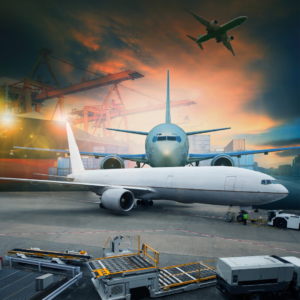
The air freight industry is poised for significant changes in 2025, with escalating demand and constrained capacity leading to increased costs. Understanding these dynamics is crucial for businesses relying on air cargo to manage the evolving logistics landscape effectively.
Understanding the Surge in Demand
Several factors contribute to the increased demand for air freight services:
- E-commerce Expansion: The continuous growth of e-commerce, particularly in Asia, has significantly boosted air cargo volumes. Consumers’ expectations for rapid delivery have made air freight the preferred mode for transporting goods quickly over long distances.
- Supply Chain Diversification: Businesses diversify their supply chains to mitigate risks from geopolitical tensions and regional disruptions. This diversification often involves air freight to ensure timely delivery across various markets.
- Ocean Freight Challenges: Port congestion and delays in ocean freight have led shippers to opt for air cargo as a more reliable alternative, increasing demand.
Capacity Constraints in the Air Freight Industry
While demand surges, capacity growth has not kept pace due to:
- Limited Aircraft Availability: Delays in aircraft production and high demand for passenger services have restricted the number of freighter aircraft available for cargo operations.
- Reduced Belly Cargo Space: Passenger aircraft, which provide additional cargo capacity in their bellies, have not returned to pre-pandemic operational levels, limiting available space for freight.
- Operational Challenges: Labor shortages and regulatory hurdles have further constrained the industry’s capacity to expand to meet rising demand.
Impact on Air Freight Costs
The imbalance between supply and demand has led to:
- Increased Freight Rates: Air freight rates have reached levels not seen in years, with projections indicating continued elevation due to persistent capacity constraints and high demand.
- Higher Surcharges: Fuel surcharges and other ancillary fees have risen, contributing to shippers’ overall cost increases.
- Competitive Space Allocation: Shippers face stiff competition for limited space, often leading to premium pricing to secure timely deliveries.
Strategies for Managing the 2025 Air Freight Landscape
To mitigate the impact of rising costs, businesses can consider:
- Advanced Planning: Booking cargo space well in advance can help secure better rates and ensure availability.
- Diversifying Transport Modes: Depending on shipment urgency and destination, integrating a mix of air, ocean, and truck freight can provide flexibility and cost savings.
- Leveraging Technology: Utilizing digital freight forwarding platforms can enhance efficiency, provide real-time tracking, and offer competitive pricing options.
- Strengthening Supplier Relationships: Collaborating closely with logistics providers can lead to more favorable terms and priority access to limited capacity.
The air freight industry in 2025 is characterized by high demand and limited capacity, driving up costs and challenging businesses to adapt their logistics strategies. Companies can manage this complex environment and maintain efficient, cost-effective supply chains by understanding the factors at play and implementing proactive measures.





Leave A Comment
You must be logged in to post a comment.